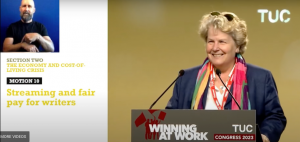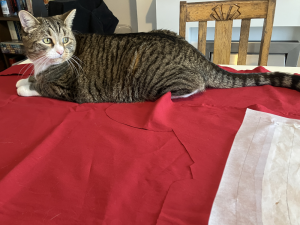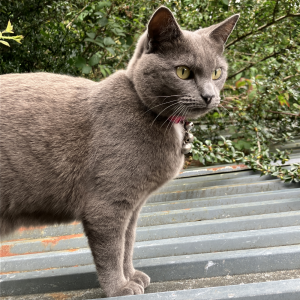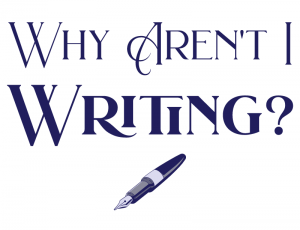Plus David Koepp on his Jurassic Park first draft, WGGB calls for residuals, Bookshop.org to branch out into ebooks, killer Barbie stats and more.
Hi there,
It’s a gorgeous autumnal day as I write this, with the sound of power tools humming outside as the neighbours get a new fence and shed put up. Good job I’ve got no calls in my diary for the next fortnight. Of course, the big victim in all of this is Copurrnicus, who won’t be allowed out until the works are done. He’s going to get very, very grumpy about that.
WGA strike breakthrough
The WGA announced on Sunday night that it has reach a “tentative” deal with the studios after 146 days of strike and five days of intensive negotiations. Although the exact terms of the deal haven’t been released as of time of writing, the WGA said that the deal was “exceptional – with meaningful gains and protections for writers in every sector of the membership”.
Before the strike can actually end, the WGA needs to finalise a Memorandum of Agreement with the AMPTP, then “the Negotiating Committee will vote on whether to recommend the agreement and send it on to the WGAW Board and WGAE Council for approval. The Board and Council will then vote on whether to authorize a contract ratification vote by the membership.”
These votes will happen today, so hopefully the strike will soon be over. Fingers crossed, now, for similar progress in the actors’ negotiations.
WGGB urges UK streamers to pay residuals

Perhaps inspired by the WGA strike, Sandi Toksvig, the president of the Writers Guild of Great Britain has called for streaming companies to pay residuals to British writers the same way that TV, film audio and theatre already do, and for an end to ‘buy-outs’, where writers sign away the right to create other works based on their intellectual property.
The WGGB tabled a motion at the Trade Union Congress in Liverpool earlier in September, where it passed. However, it’s not clear how much good it will do.
Unlike the US, closed shops have been illegal in the UK since the anti-trade union legislation of 1990 and 1992, meaning that it’s basically impossible for writers to strike. In order to force the famously recalcitrant and miserly streamers to share a bit more of their massive profits with writers, we’d almost certainly have to see legislation put in place. Chances of that happening anytime soon is nil, sadly.
Suw’s news: BAFTA Rocliffe submission submitted
After a fairly intense bout of work, I got my BAFTA Rocliffe New Writing Competition entry safely submitted. It was a useful process, not least because it forced me to start refining my plans for what happens in each episode of Tag, which will help when I restart my rewrite, which is currently on pause due to Ada Lovelace Day.
Once ALD is done, though, I have to focus on converting the pilot into prose for the Discoveries prize (more on that below). That really will be an interesting process, as it will either make or break the whole idea of writing the series and novelising it. At this rate, the first 10,000 will the most polished thing I’ll ever have written, but it remains to be seen if they’re polished to a high shine or still a turd.
Opportunity: Discoveries 2024 is open!
The Discoveries writer development program, organised by the Women’s Prize for Fiction along with Audible, Curtis Brown Literary Agency, and the Curtis Brown Creative writing school, is open to submissions until 8 January 2024. That gives you more than three months to get your entry together, which is plenty of time!
Discoveries is open to unpublished and unagented women writers in the UK or Ireland who can submit:
the opening of a novel in English – up to 10,000 words – across any genre of adult fiction for the chance to take part in a bespoke creative writing course, secure personalised mentorship packages, an offer of literary agent representation and a prize of £5000. Unlike most initiatives of this kind, writers are not required to have finished their novel, and Discoveries is completely free to enter.
Find out more about eligibility and how to submit on their FAQ page.
Charlotte Duckworth on why the size of your advance matters
I’ve seen so many authors talking about how tiny advances are these days, but not so much chatter about why getting a larger (but not too large) advance bodes better for your book than a small advance.
“The truth is, the size of your advance is the biggest indicator of how likely your book is to be successful,” says author Charlotte Duckworth, because it indicates how much marketing budget your publisher is likely to allocate to your book. So is it even worth accepting a low advance?
Stop, look, listen: A Script Apart, Jurassic Park with David Koepp
I really enjoyed this conversation between A Script Apart’s Al Horner and Hollywood screenwriter David Koepp about the first draft of Jurassic Park, how Koepp wrote it and how it differs from the final film.
Jurassic Park was an adaptation of Michael Crichton’s book and although Ian Malcolm (played by Jeff Goldblum in the film) is in the book, Koepp didn’t put him into the first draft of the screenplay because he felt Malcolm would be too challenging of a character to include. The section about how this actually helped Koepp to flesh out the other characters first, and then how important it was to the story overall to re-insert Malcolm back into the story is fascinating.
Tip-top tip: Get your order of operations right
I found this piece on how to write nonverbal communication by Shaunta Grimes really interesting. Grimes examines the impact on pacing, tone and meaning of swapping over dialogue and action descriptions.
When you put the action before the dialogue, the reader will make the shift to the action and dialogue happening in conjunction. Seamless.
When you put it after the dialogue, it reads like first there is dialogue and when that’s entirely over, hard stop, and then the action.
I had honestly never really thought about this, but not only is Grimes right, this is actually a really useful thing to internalise and apply when you need it.
Bookshop to branch out into ebooks?
Bookshop.org, the online book retailer which has passed on a $28 million share of its in profits to indie bookstores, is going to start beta testing ebook sales this November. The ebooks will be available on Apple, Android and web-based platforms.
Hunter hopes to gain an edge over Amazon by making content from e-books more sharable and social, as well. “E-books have been too walled off from the rest of the internet and need to be more a part of the online conversation,” he says. “They are filled with interesting ideas and should be out there and given an opportunity to go viral.”
Finally, an ethical alternative for ebooks!
Barbie wins
The numbers are in, and Barbie has won a number of notable firsts. Barbie was:
- Biggest hit ever for Warner Bros.
- First movie solely directed by a woman to become the biggest hit of the year.
- One of only 53 movies of all time with worldwide sales over $1 billion.
- Highest opening weekend in the US for a movie directed by a woman.
- Bigger hit that Frozen.
Maybe now we can put to bed the idea that movies made by and for women won’t sell.
Obligatory cat picture
 I have spent much of the last few years learning how to draft my own sewing patterns, primarily because I’m one of the approximately 15 per cent of the population for whom store-bought clothes just will never fit properly. I am in the process of sewing a top that I can wear on Ada Lovelace Day at the Royal Institution, so of course Copurrnicus had to come and help me cut out.
I have spent much of the last few years learning how to draft my own sewing patterns, primarily because I’m one of the approximately 15 per cent of the population for whom store-bought clothes just will never fit properly. I am in the process of sewing a top that I can wear on Ada Lovelace Day at the Royal Institution, so of course Copurrnicus had to come and help me cut out.
That’s it for now! The next issue of Word Count is due on Ada Lovelace Day itself, which might pose a few issues, so don’t be surprised if it’s a little late that week!
All the best,
Suw
{ Comments on this entry are closed }








